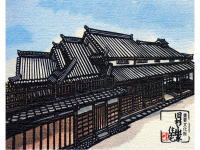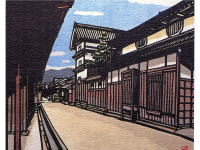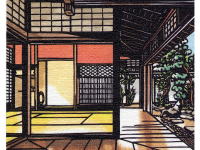富田林寺内町の探訪
I'm glad to intorduce an old town, Jinaimachi, Tondabayashi, Osaka, Japan as a national historic district and heritage site.
It takes 30 minutes from Osaka city to Tondabayashi station by Kintetsu railways. A 10-minutes walk will take you to the historic town.
ギャラリー
residence of the Hashimoto Family
| 【Tourist guide to Jinaimachi town, Tondabayashi, a historic district and heritage site of Japan, Residence of the Hashimoto family Page 1/2】 | ||||
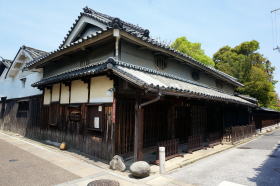 |
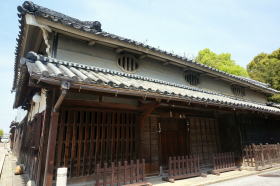 |
|||
| Zushi-Nikai or Tsushi-Nikai The second floor with a low ceiling, which is seen on plastered wall of farmhouses found in Kansai region. Mushikagomado (Mushikomado) The second floor windows with a plastered grid on the plasterer wall of buildings. It is believed to have developedthrough the vent holes of the second floor with low ceiling. There are also often used in townhouses, and some are in shape of patterns and trademarks. |
||||
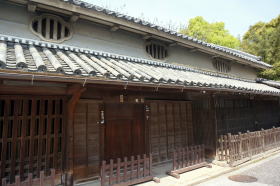 The width of Mushiko-mado gets larger from left to right. |
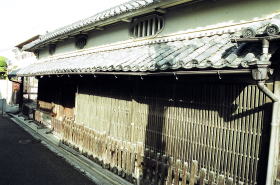 |
|||
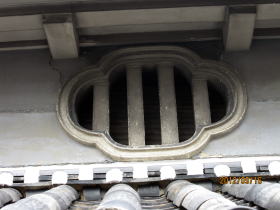 Mushiko-mado・lerft |
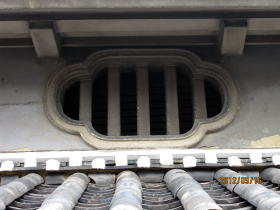 Mushiko-mado・center |
|||
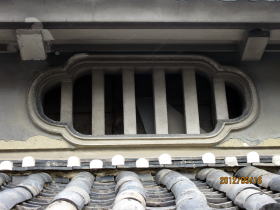 Mushiko-mado・right |
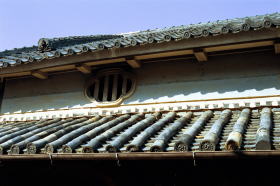 Tsushi-Nikai・Mushiko-mado |
|||
| Mochiokuri (Corelling) In order to support the part that protrudes, such as bay windows and eaves (sunshade), the diagonal wooden member or wooden plate to be attached to the wall or a pillar. Latticed windows Musou-mado, Ara-goushi, Bekako-mado Old exterior window structure that combines vertical or horizontal wooden laths or bamboo being embeded on the outer frame of lintel (one with grooves for sliding doors), and sliding door made of wooden laths inside. The windows can be opened and closed by the movement of the door. It is also referred to as either Musou ,or Musou-renji-mado, or Musou-do. It is also called Bekako-mado in Jinaimachi town in Tondabayashi. |
||||
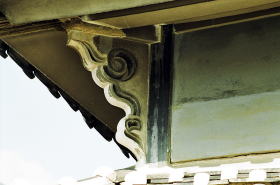 Plastered mochiokuri |
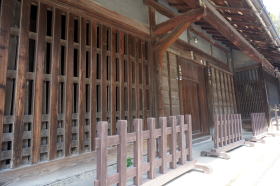 Ara-goushi(Bekako-mado) |
|||
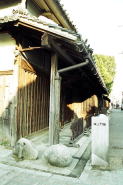 |
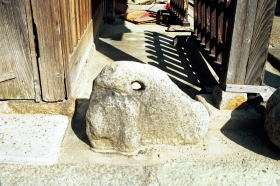 Koma-tsunagi |
|||
| Oki-yane (Saya-kumi) It literally means a placed roof structure. Gassho-gumi style structure is characterized as the triangle frame of roof whose main structural beam that supports the roof, called principal rafter. Gassho means joining one's hands in prayer and the shape of the structure resembles that of joining one's hands in prayer. |
||||
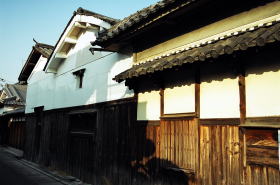 |
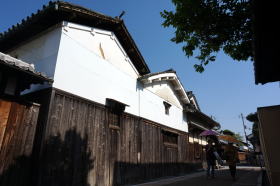 storehouse(Oki-yane style roof) |
|||
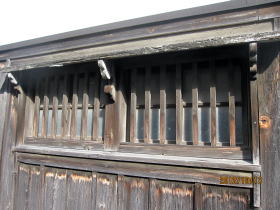 |
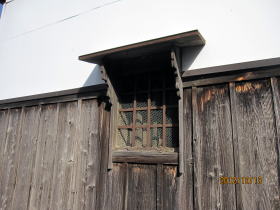 |
|||
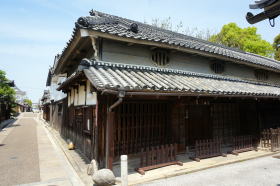 |
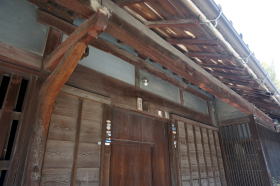 Mochiokuri |
|||
| 【Tourist guide to Jinaimachi town, Tondabayashi, a historic district and heritage site of Japan, Residence of the Hashimoto family Page 2/2】 | ||||
|
||||
Information

Not open to the public
(private residence)
Year built:
the second half of 18th century
Location:
At the intersection of Jyounomonsuji Street and (east) Hayashi-cho Street in Jinaimachi town.
Trade name: Bettsui-ya
History (Origin)
The trade name of the family was referred to as Bettsui-ya and the family
had engaged in the brewing industry.
Features of the buildings
The premise occupies the southern half of the block. The main house is
Irimoya style structure, which characterizes the old merchants’ residences
in Jinaimachi town, Todabayashi.
The Ara-goushi, a latticed window set in the exterior of Shimomise, or
storefront, was designed to serve Musou-mado. The grid space of lattice
can be opend and closed. It is also called Bekako-mado in the town. Koma-tsunagi
stone has been left.
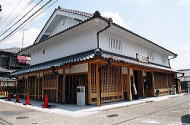
Visitor Center
(Jinaimachi Kouryuukan,
Town Community Center)
Address
9-29, Tondabayashi-cho, Tondabayashi city, Osaka, 584-0033, Japan
TEL.+81-(0)721-26-0110
FAX.+81-(0)721-26-0110
open 10a.m. until 5 p.m.
closed on Monday
The site-seeing map
available in English. Please stop by to the Tourist Information Cetnter
or Jinaimachi Visitor Center.
Restrooms
Available at Jinaimachi Visitor Center (Jinaimachi Kouryuukan), Jinaimachi
Center and Jinaimachi Tenbou Hiroba (Viewing Terrace)
Visitor Parking
Road width is very narrow in Jinaimachi town. If traveling by car, please
use Tondabayashi Municipal east parking newly opened in February 2014 (Toll
parking).
You can park the minibus for groups and passenger cars for general use.
Only one parking lot available for minibus, you must book it in advance
with Tondabayashi City Hall. A 15-minute walk to the Jinaimachi Visitor
Center and 5 minute walk up to the former Sugiyama family house, an important
national cultural property.
You will note that you will contact Tondabayashi Municipality Office for
a parking lot of large tourist bus for groups. Thank you in advance for
your kind cooperation.
